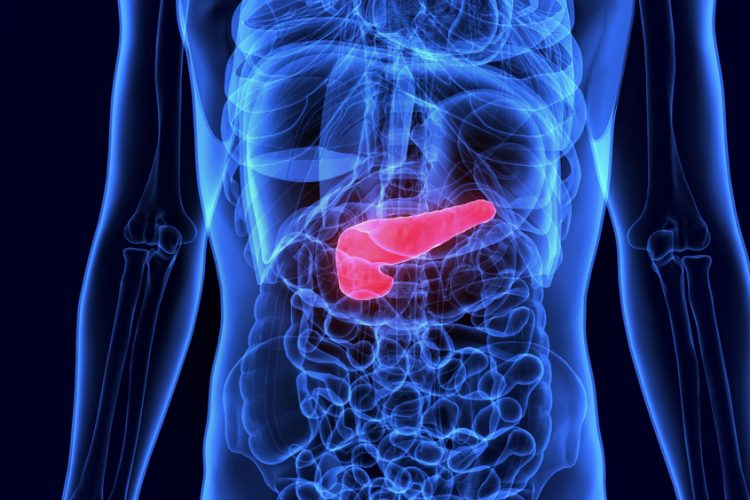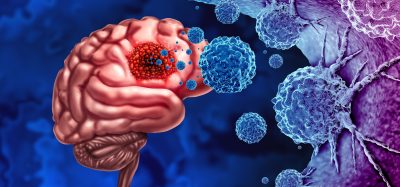Investigational drug kills pancreatic cells in mice by cutting off cysteine supply
Posted: 3 April 2020 | Victoria Rees (Drug Target Review) | 1 comment
Researchers have demonstrated that cysteinase, a new drug compound, can starve pancreatic cells of cysteine supply, causing ferroptosis.


A new study has revealed that a potential compound in development for a rare kidney stone disease may have potential against pancreatic cancer.
The researchers, from Columbia University Irving Medical Center and the Herbert Irving Comprehensive Cancer Center, both US, say that the compound starves tumours of an amino acid called cysteine, which was found to be critical to the survival of pancreatic cancer cells.
“We’re very encouraged by these results,” says Dr Kenneth Olive, associate professor of medicine at Columbia University Vagelos College of Physicians and Surgeons and senior author of the study. “Pancreatic cancer is a uniquely lethal disease, with an average survival rate of just six months after diagnosis. We’re in desperate need of new treatments.”
Most pancreatic tumours boost the production of oxidants that can kill many normal cells. Yet, pancreatic tumours thrive under these toxic conditions by importing large amounts of cysteine into their cells. All cells, including pancreatic tumour cells, use cysteine to manufacture molecules that detoxify oxidants.
When starved of cysteine, the pancreatic cancers cells are killed by a process called ferroptosis”
“Since pancreatic tumours appear to depend on cysteine import for their survival, we hypothesised that it might be possible to slow tumour growth by selectively targeting this amino acid,” Olive said.
When the gene that controls cysteine import was knocked out in mice with pancreatic cancer closely resembling human tumours, cutting off the cancer’s supply of cysteine, the tumours stopped growing and median survival time doubled. The team also revealed that there was little toxicity associated with the use of the compound.
The researchers achieved similar results when the mice were treated with cysteinase – an experimental drug that breaks down cysteine in blood. Cysteinase is currently being developed by researchers for the treatment of cystinuria, a rare genetic disorder in which high levels of cysteine concentrate in the urine, causing kidney and urinary tract stones.
When starved of cysteine, the pancreatic cancers cells are killed by a process called ferroptosis, the researchers also found. Ferroptosis is a form of programmed cell death that results from oxidation damage to cell membranes.
Olive’s team also worked with a group from the University of Michigan and a group from the Salk Institute to explore the detailed cellular and molecular mechanisms of ferroptosis in pancreatic cancer, in hope that this understanding might lead to additional therapeutic approaches.
Olive’s team is now planning to test whether the effect of cysteinase can be magnified by combining it with other treatments, including immunotherapy.
“Though it is not yet known if pancreatic cancers in patients are also susceptible to ferroptosis from cysteine depletion, the clinical development of cysteinase for treatment of the metabolic disorder cystinuria may allow us to test the idea soon,” said Olive.
The findings were published in Science.
Related topics
Amino Acids, Drug Leads, Oncology, Target Molecule, Therapeutics
Related conditions
Cystinuria, Pancreatic cancer
Related organisations
Columbia University Irving Medical Center, Herbert Irving Comprehensive Cancer Center, Michigan University, Salk Institute
Related people
Dr Kenneth Olive








The drug sulfasalazine is a cysteine glutamate antiporter inhibitor as I have described in my bestselling book How To Starve Cancer. Cysteine is require for glutathione production inside the cancer cell which it uses as defence. Without adequate supply of this it is vulnerable to free radical damage. Chemotherapy used without sulfasalazine is ineffective in pancan because of this.
Sulfasalazine, an old cheap off patent drug, is being used alongside artesunate and intravenous vitamin C -which at high dose produces hydrogen peroxide free radicals – a cocktail that is also combined with iron to effectively induce ferroptosis.
I am seeing excellent results from several oncologists employing this approach.
The combination of reducing glutathione while increasing free radicals safely and in a targeted way that doesn’t indiscriminately kill healthy cells is surely preferable to toxic doses of chemotherapy. Using sulfasalzine and chemo together should mean lower doses can be used.
I am very excited by the results, particularly with many cancers that upregulate this pathway, not just pancreatic cancer.